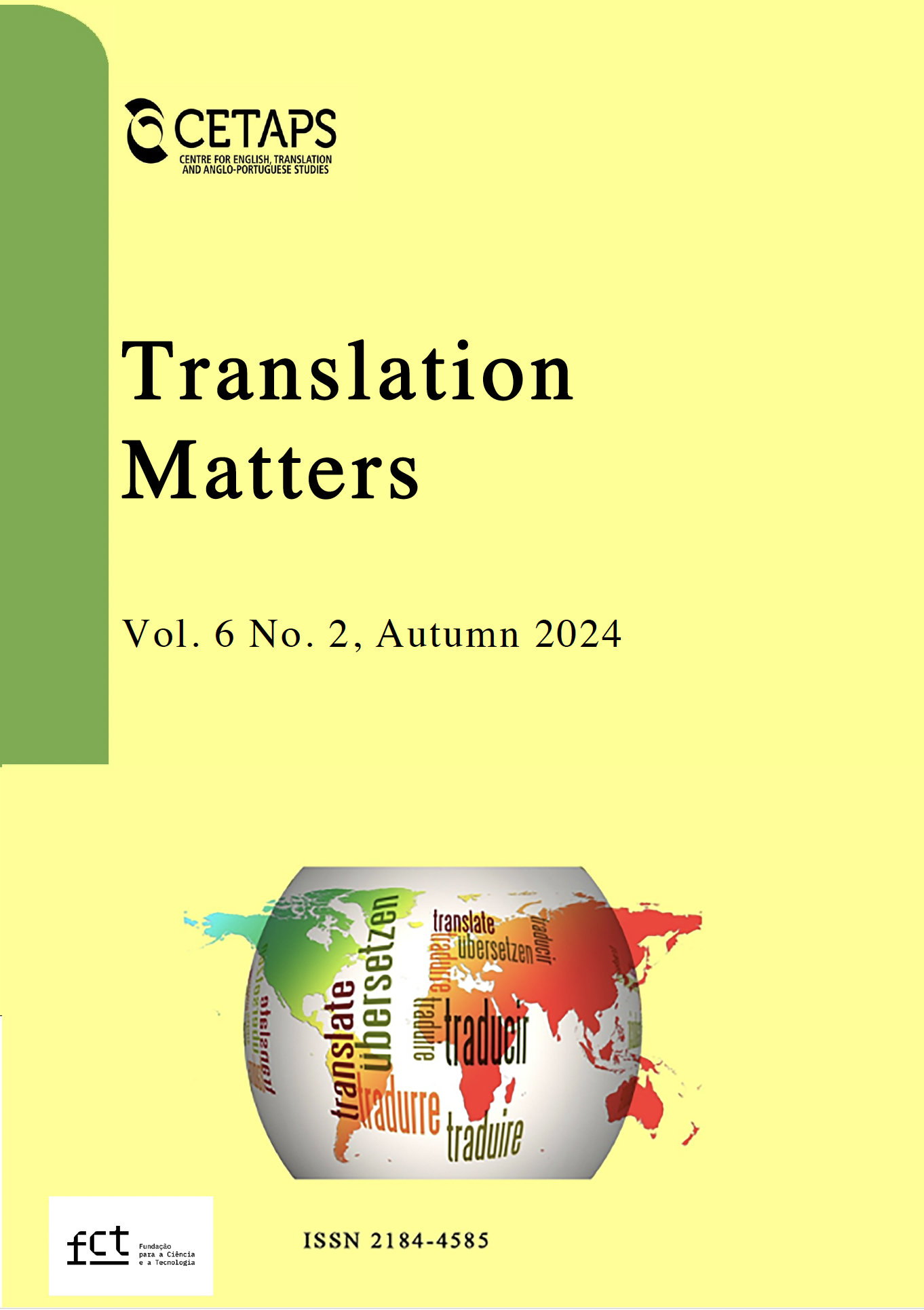A legendagem para Português Europeu do Nadsat em A Clockwork Orange
Keywords:
Audiovisual translation, subtitling, translation strategies, Nadsat, fictional languageAbstract
O objetivo deste artigo é a identificação das estratégias utilizadas na tradução para legendagem em português da língua ficcional Nadsat no filme A Clockwork Orange (1971), disponível na plataforma de streaming HBO Max, tendo em conta tanto as particularidades do meio audiovisual como o facto de esta ser uma língua característica da história, das personagens e do mundo em que se insere. Apesar de existirem vários estudos sobre a tradução do Nadsat em literatura, não existem estudos sobre a sua tradução para o audiovisual, muito menos para o português. Concluiu-se que a estratégia menos utilizada foi a Manutenção, pelo que se observou uma padronização de grande parte dos termos em Nadsat havendo, consequentemente, uma grande diminuição de instâncias de língua ficcional na legendagem em português.
PALAVRAS-CHAVE: Tradução Audiovisual; Legendagem; Estratégias de Tradução; Nadsat; Língua Ficcional
References
Amis, K. (2012) ‘A Clockwork Orange’, in A Clockwork Orange: The Restored Edition, pp. 275–276.
Amis, M. (2012) ‘Foreword’, in A Clockwork Orange. Penguin Books, pp. vii–xiv.
Biswell, A. (2012) ‘Introduction’, in A Clockwork Orange. Penguin Books, pp. xv–xxxi.
Burgess, A. (2012a) A Clockwork Orange: The Restored Edition. Penguin Books.
Burgess, A. (2012b) ‘A Last Word on Violence’, in A Clockwork Orange: The Restored Edition, pp. 305–306.
Burgess, A. (2012c) ‘Clockwork Marmalade’, in A Clockwork Orange: The Restored Edition, pp. 245–251.
Burgess, A. (2012d) ‘Programme Note for A Clockwork Orange 2004’, in A Clockwork Orange: The Restored Edition, pp. 259–262.
Hyman, S.E. (2012) ‘Afterword’, in A Clockwork Orange: The Restored Edition, pp. 297–303.
Maher, B. (2010) ‘Attitude and Intervention: A Clockwork Orange and Arancia meccanica’, New Voices in Translation Studies, 6(1), pp. 36–51.
Malamatidou, S. (2017) ‘University of Birmingham Creativity in Translation through the Lens of Contact Linguistics’, The Translator, 23(3), pp. 292–309.
Overbeeke, A. (2014) Fictional languages in film and television. Available at: edu/12472592/Fictional_Languages_in_Film_and_Televi sion (Accessed: 19 November 2023).
Pinto, S.R. (2009) ‘How important is the way you say it?’, Target. International Journal of Translation Studies, 21(2), pp. 289–307. Available at: https://doi.org/10.1075/target.21.2.04pin.
Ricks, C. (2012) ‘Horror Show’, in A Clockwork Orange: The Restored Edition, pp. 279–292.
Rodríguez, V. (2022) ‘“A Clockwork Orange” em Portugal: a tradução do Nadsat’, Cadernos de Tradução, 42(01), pp. 1–20. Available at: https://doi.org/10.5007/2175-7968.2022.e83222.
Vincent, B. and Clarke, J. (2017) ‘The language of A Clockwork Orange: A corpus stylistic approach to Nadsat’, Language and Literature, 26(3), pp. 247–264. Available at: https://doi.org/10.1177/0963947017706625.
Xavier, C. (2022a) ‘On norms and taboo’, Target. International Journal of Translation Studies, 34(1), pp. 67–97. Available at: https://doi.org/10.1075/target.20020.xav.
Xavier, C. (2022b) ‘On norms and taboo’, Target. International Journal of Translation Studies, 34(1), pp. 67–97. Available at: https://doi.org/10.1075/target.20020.xav.
Referências filmográficas
A Clockwork Orange. (1971). [Online]. Directed by Stanley Kubrick [Film]. Warner Bros. Available from HBO Max. [Viewed on 20 December 2023].
Downloads
Published
Issue
Section
License
Copyright (c) 2024 Translation Matters

This work is licensed under a Creative Commons Attribution 4.0 International License.


